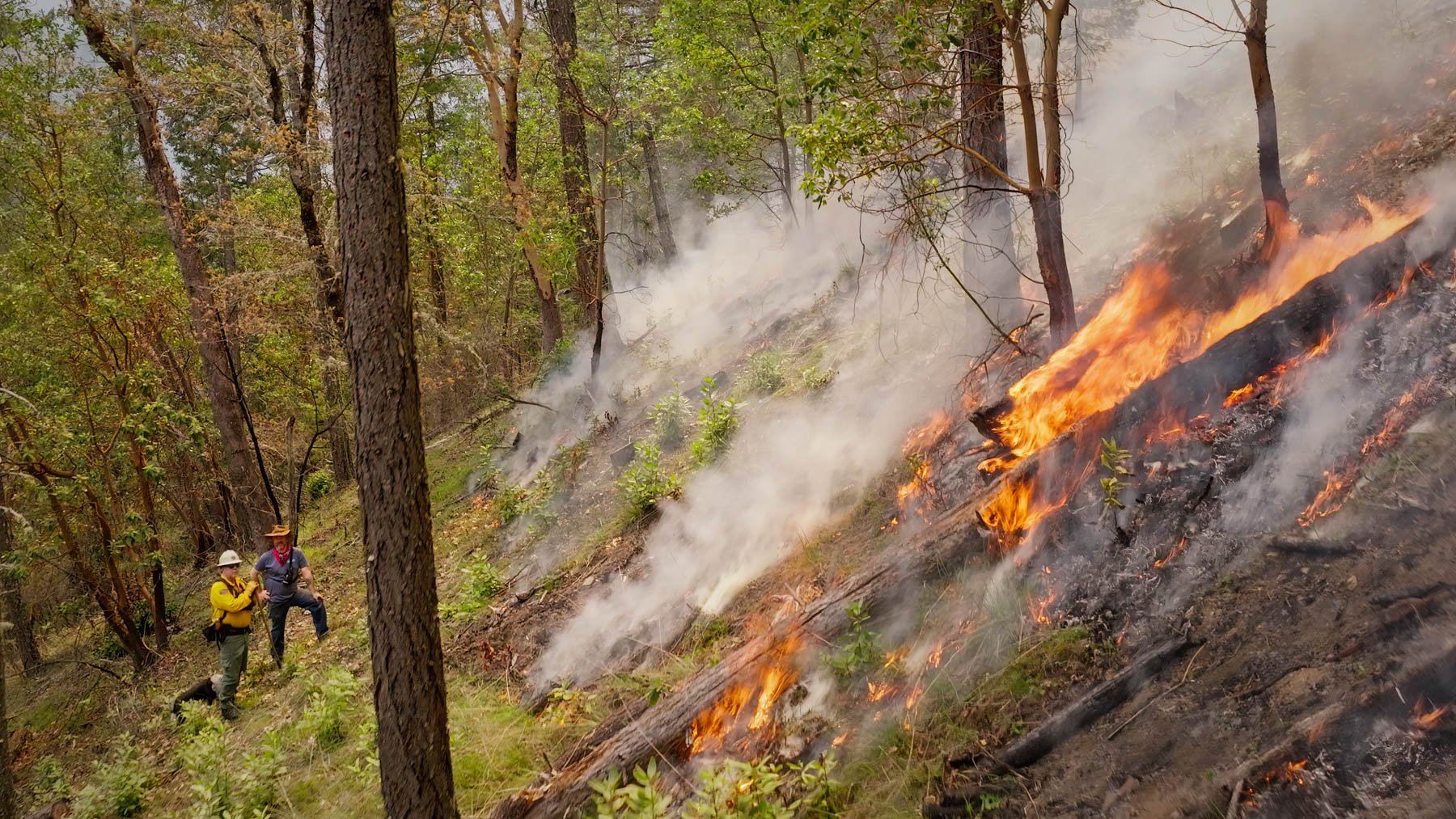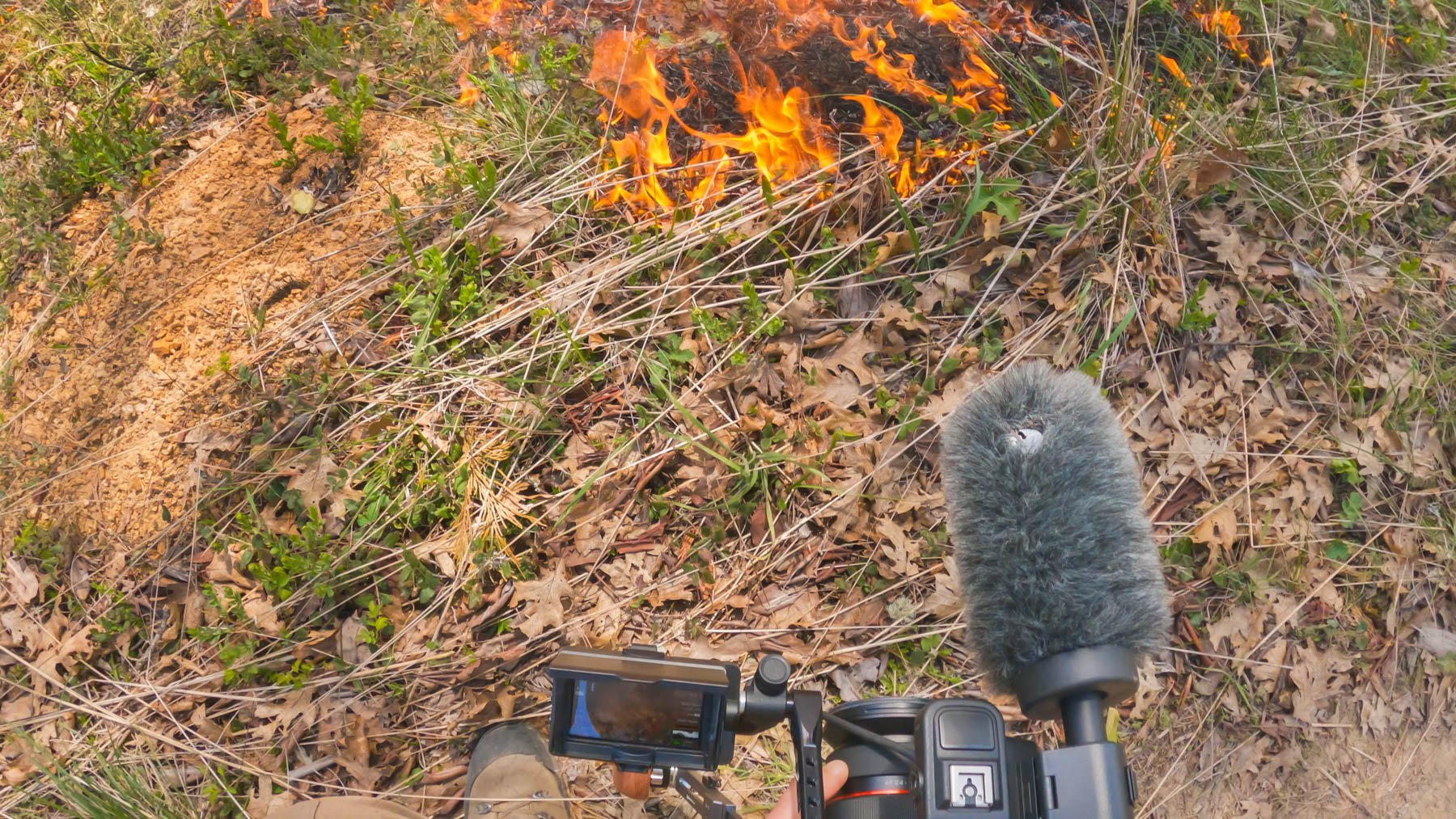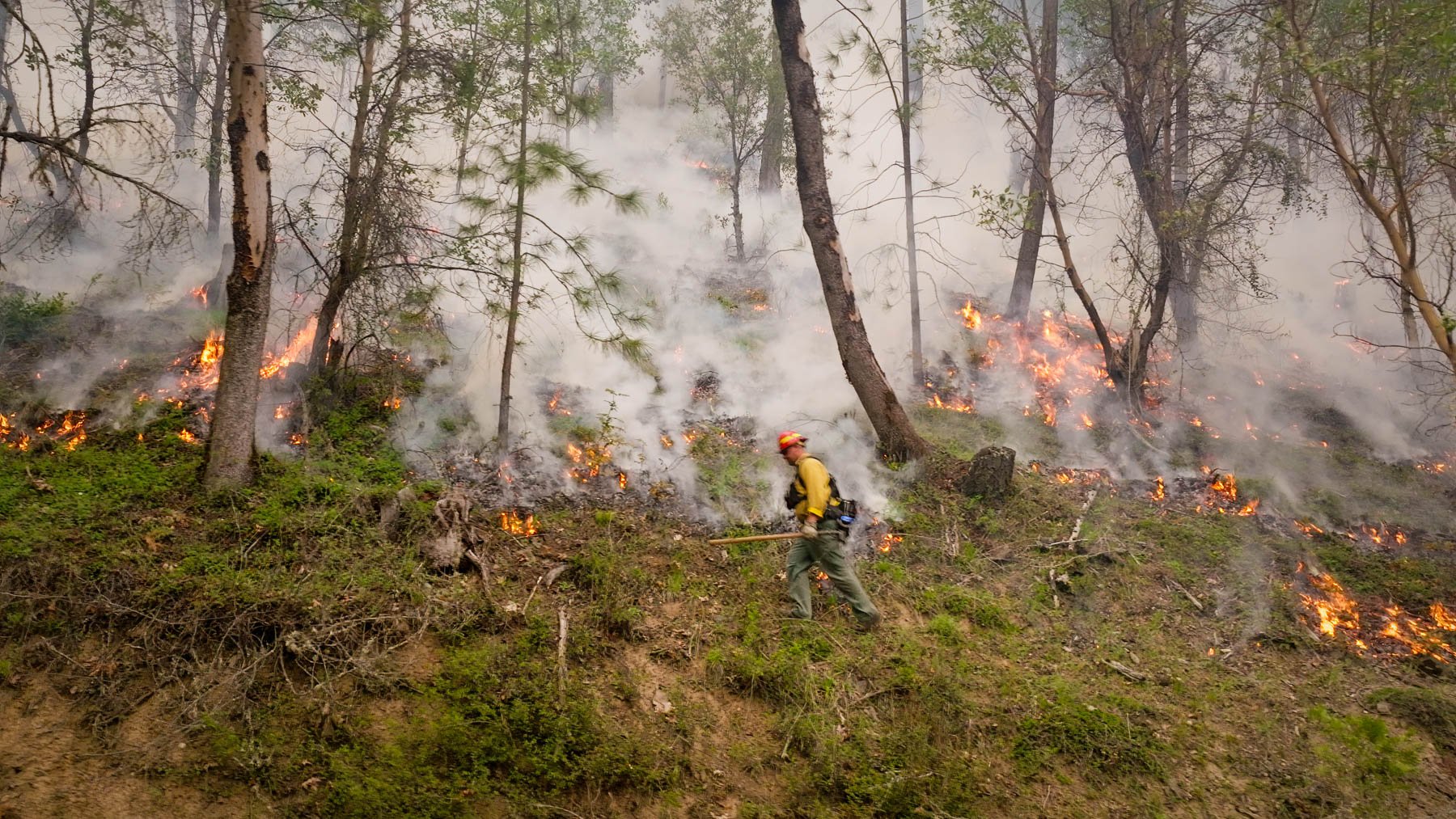Behind the scenes - Burning to heal
In the past 14 years of creating media, most of what I’ve done is collaborating to create other people’s visions and projects. This newest video, “Burning to Heal” is one of the first major projects where it was my own vision and creation.
If you know me, you might know that I’m extremely passionate about fire and the role it plays on our landscapes and within our communities. When I worked for the Forest Service as a wildland firefighter from 2010-2013, forest fires were not at the top of everyone’s minds. 10 years later the game has completely changed. Now you can ask almost anyone and they have most likely been impacted directly or indirectly by fires, or they know someone who has. I see forest fires as a unifying factor linking us all to a warming world with hotter, dryer, and longer summers.
Bringing the fire downhill
With no budget or client, “Burning to Heal” has been a passion project from start to finish. Having captured the video in the Spring of 2023, the edit was completed a year later and entered into film festivals for 2024 and 2025. Having the film accepted into several film festivals has me excited to share this important story of a community starting to adapt to a future with increasing fire.
The filming of “Burning to heal”
Prepping equipment before the test fire
Capturing this whole video took just 2 days. The first day was the pre-burn b-roll and the main interview with Tucker who’s land was being burned. The second day of filming was the controlled burn itself. They were long days with early starts to capture as much footage as possible because there are no do-overs when it comes to fire. The ignitions start when the burn window opens, and once you get going there is no stopping, pausing or going backward.
Only slightly melting the microphone windblock
This particular burn wasn’t very large at 7 acres, but it was on some pretty steep slope. I was the only one filming and carrying my equipment which narrowed the amount and type of video tools I could use. That meant pretty much the whole film was captured on my one camera (Sony FX6) and a drone. As you watch the interviews, many of the people look like they are looking almost directly into the camera as they talk. That is because I’m holding the camera on my shoulder as I ask the questions instead of using a tripod. This were moving so quickly that I couldn’t physically carry a heavy tripod with me during much of the burn.
This was the first opportunity I’ve had to film a full video project during any kind of active fire or burning. The fire world is very much closed off to outside visitors so this opportunity to help tell their story felt like a big deal. Thankfully even with being so close to the flames and smoke, all of my equipment held up and the only damage came from a burning leaf that fell onto the microphone windscreen which only slightly melted it.
stepping back to refocus
In the past, I’ve had four fire seasons of controlled burning along with fire suppression with the US Forest Service and have probably several hundred acres. That doesn’t make me an expert at all, but it has given me a relatable feel for burning and fire. I will be honest, I was slightly nervous about how the burn would go because there is such a strong mentality around the safety and a professional work atmosphere in the fire world. Rightly so, there should be a strong ethic around safety. I feel like that mentality can quickly morph into a feeling that unless you are a top-tier professional, no one else knows about fire they shouldn’t be allowed to be there.
I am starting to think that this elitism approach to fire could be one of the biggest obstacles to us becoming more fire resilient. Fire is affecting each and every one of us in Oregon, the Western United States, and honestly throughout the world. It’s a part of our environment where we live, and we all need to learn how it works.
Seeing organizations like the Rogue Valley PBA and landowners like Tucker step up to lead the way involving all groups of people and organizations, gives me hope for a better future living with fire.
With the amount of work that needs to be done in preparing for future fires, it will take everyone to get there. Many people don’t have the means to purchase hundreds of dollars of fire-resistant nomex clothing, but they can wear naturally fire-resistant cotton instead. Hard hats, gloves, and other PPE can be provided for the day by sponsoring organizations as well. There are ways around the obstacles if we are open to looking for solutions and bringing others on board.
Once the burn got going, I was able to see and trust more that others around me did have a plan and they knew how to execute it. From there, my outlook changed and I started feeling different than I had experienced while burning in the past. We still had similar steps, goals, and processes, but this time it was more about teaching and learning and building community. Not trying to overpower nature and make the fire to do exactly what we want it to do. It had more of a collaborative feel, rather than a militaristic or charged atmosphere. It was uplifting and had almost a feeling of awe for me that this was possible. All powered by people volunteering their time and believing in trying something new to help their neighbors and the land.
For myself, I’ve always had a love for fire ever since working as a firefighter. That love has never gone away and be involved with a project like this has been incredible. To other fire professionals past or current, I would encourage you to seek out opportunities like this to fuel that passion and also give back to your neighbors at the same time. For everyone else with little or even no fire experience, I would encourage you to do the same and explore what fire can mean to you.
I really hope we can assess where we want our future to go with fire, and what it will take for us to get there. For me, it feels more like a trickle-up rather than a trickle-down situation and we all need to get involved.
-Michael Sherman










